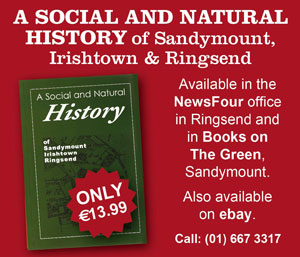
Pictured: John Holohan, Chairman of the Society. Photo by Maria Shields O’Kelly.
The Great War was an extraordinary event from history, affecting many families in Ireland, and has been described as “The Glorious Madness” by Turtle Bunbury in his book. As part of the commemorative events marking the centenary of WWI, Michael Pegum was invited by the Ballsbridge, Donnybrook and Sandymount Historical Society to give a talk on local war memorials in Pembroke Library.
Pegum drew on his own experience of having lost a cousin in the war, describing his feeling on visiting the memorial in Belgium, on which his cousin’s name is inscribed, saying, “How important it is to have a name literally carved in stone.”
When he retired, Pegum began researching war memorials through The War Memorial Archive run by the Imperial War Museum in the UK, who had been doing an inventory of war memorials since the 1960s covering 65,000 memorials.
However, this inventory did not cover the Republic and did not include photographs, so Pegum embarked upon his own quest to compile an Irish database addressing these gaps. “With the help of over 30 contributors we have, earlier this year, covered at least one memorial in every county on the island, north and south. The website includes over 900 memorials with 27,000 names from 200 regiments.
Pegum took the audience through a photographic slideshow featuring some local memorials, of which there are many. The narration explained the background stories and pointed out the various types of memorials such as stained glass, pew plaques and mosaics, to name a few.
“A more common pattern for an Irish Memorial is the Celtic Cross, such as the one on Anglesea Road at St Mary’s Church,” Pegum explained. “Along with WWI and WWII casualties, there is also one from the Korean War.” A quote from the site reads, “Let those who come after see to it that their names be not forgotten.”
For further research go to the user-friendly website at www.irishwarmemorials.ie
By Maria Shields O’Kelly



